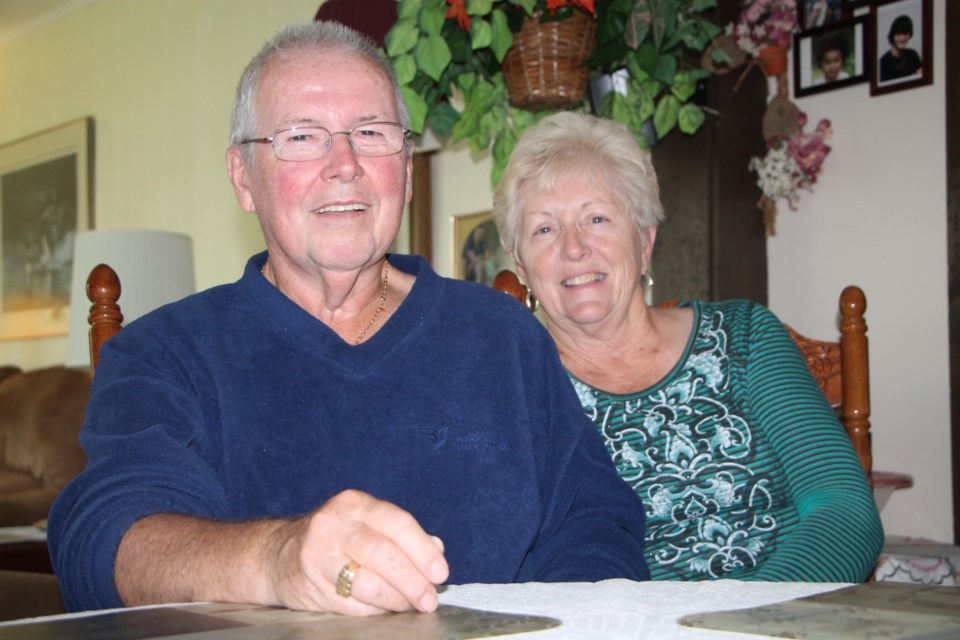Jim Davey is finally enjoying life with a steadier hand.
And, thanks to a non-invasive medical procedure which is starting to attract a lot of attention, he hopes things will get even steadier.
Davey is affected by essential tremor, a neurological condition that causes constant shaking.
Often confused with Parkinson’s disease, essential tremor is not life-threatening, but eventually gets worse and can become severe.
Approximately one million Canadians are affected by essential tremor and most of them deal with the tremors through prescribed medication.
However, not all respond to medication, which is why some with essential tremor are turning to a recently-approved, non-invasive ultrasound therapy, known as ultrasound thalamotomy, for relief.
Such is the case with Davey.
“I’ve had it (essential tremor) since I was 12 years old,” Davey told SooToday, adding his father and grandmother suffered from the condition as well.
“There was no help at all, you just lived with it, and I did for 60 years,” said Davey, now 73.
“I’m glad it didn’t affect my job,” said Davey, who worked as an Algoma Steel crane operator and learned to live with the condition, even managing to play golf with friends.
Fortunately, it never affected his ability to drive.
At first, the condition was not so severe, Davey recalled.
The tremors can start at any age, but are more common in people 40 or over.
“At 12 years old it was just a minimal tremor, then when I was 34 years old it got more pronounced and they put me on drugs, which kept it in check.”
“But in the last four or five years it just seems I’ve gotten immune to the drugs and it’s progressing,” Davey said.
Essential tremor has affected most of his body.
“My legs shake, it makes my voice shake and both hands shook, but since they’ve done the procedure, with my right hand at least, I can pick up a forkful of food or something to drink.”
“There were so many different things I just took for granted that I had a very hard time doing.”
“He didn’t feel like going to a restaurant or a friend’s house for supper, he was housebound, really,” said Davey’s wife Shirley.
“You can even scare your grandchildren off when they see you shake like that,” Davey said.
Davey first learned of ultrasound thalamotomy, offered through Dr. Michael Schwartz at Toronto’s Sunnybrook Hospital, in the spring of 2012.
Davey asked his doctor to refer him to Sunnybrook, and the next day he received a phone call from Schwartz.
Davey was informed the procedure, though non-invasive, was still in the study stage and that cognitive or speech problems could result if the procedure wasn’t successful.
The ultrasound therapy actually involves destroying small parts of brain tissue in order for it to work.
“We held off, waiting for it to become standard procedure, but it got so bad I couldn’t take it anymore and I told the doctors, ’do what you’ve got to do.’”
“I was done, I just couldn’t take it any more,” Davey said.
Davey went through with the procedure at Sunnybrook Hospital May 5, 2016.
“It’s one time only. They put you in an MRI machine but first they put something like a crown on your head and once you’re in the machine you can’t move at all.”
“They burn some cells on one side of your brain with a concentrated ultrasound beam, and when that’s done it’s permanent, whatever the results are, that’s what you get,” Davey said.
“He had to have his head shaved bald, really shaved, because they said one little hair would send the beam in the wrong place,” Shirley recalled.
“The object they put on his head, it had some kind of a tube running around it with cold water running through it to keep his head cool, or otherwise it would have cooked his brain.”
The procedure lasted about three hours.
Frightening indeed, but for Davey it seems to have been worth it.
His right hand and arm are now completely steady.
Davey left Toronto for Sault Ste. Marie the following day, but has travelled to Toronto for several checkups since.
“For a month or two I had problems with my balance but that’s almost gone now, and the doctor said it would take anywhere from a month to a year.”
“It’s just incredible, I’m absolutely thrilled with the results, it’s like I’m halfway normal again,” said Davey, who was the 33rd patient in Canada (and the second from Sault Ste. Marie) to undergo the procedure.
“It’s just incredible to be able to pick up a forkful of food and a glass without spilling anything.”
“That’s why I didn’t want to go out for dinner before, the food would wind up in my lap…it’s made a lot of difference.”
Davey is going out in public more often, golfing, and enjoying activities in and around the house, including building bird houses in the workshop of his Sault Ste. Marie riverfront home.
“I don’t feel hindered any more.”
After more checkups, and after making sure a second round of ultrasound is safe, the medical team at Sunnybrook hopes to give Davey a second treatment in the spring of 2017 to eliminate the tremors on the left side of his body.
Before now, second-time ultrasound thalamotomy patients enjoyed only a 25 percent success rate, but now doctors are confident they have perfected the procedure and can help Davey completely recover.
“It made quite a difference, so I hope they can do something with my left side too,” Davey said.
"If they can get the left hand even half as good, it would be terrific.”
“There’s hope,” wife Shirley smiled.
